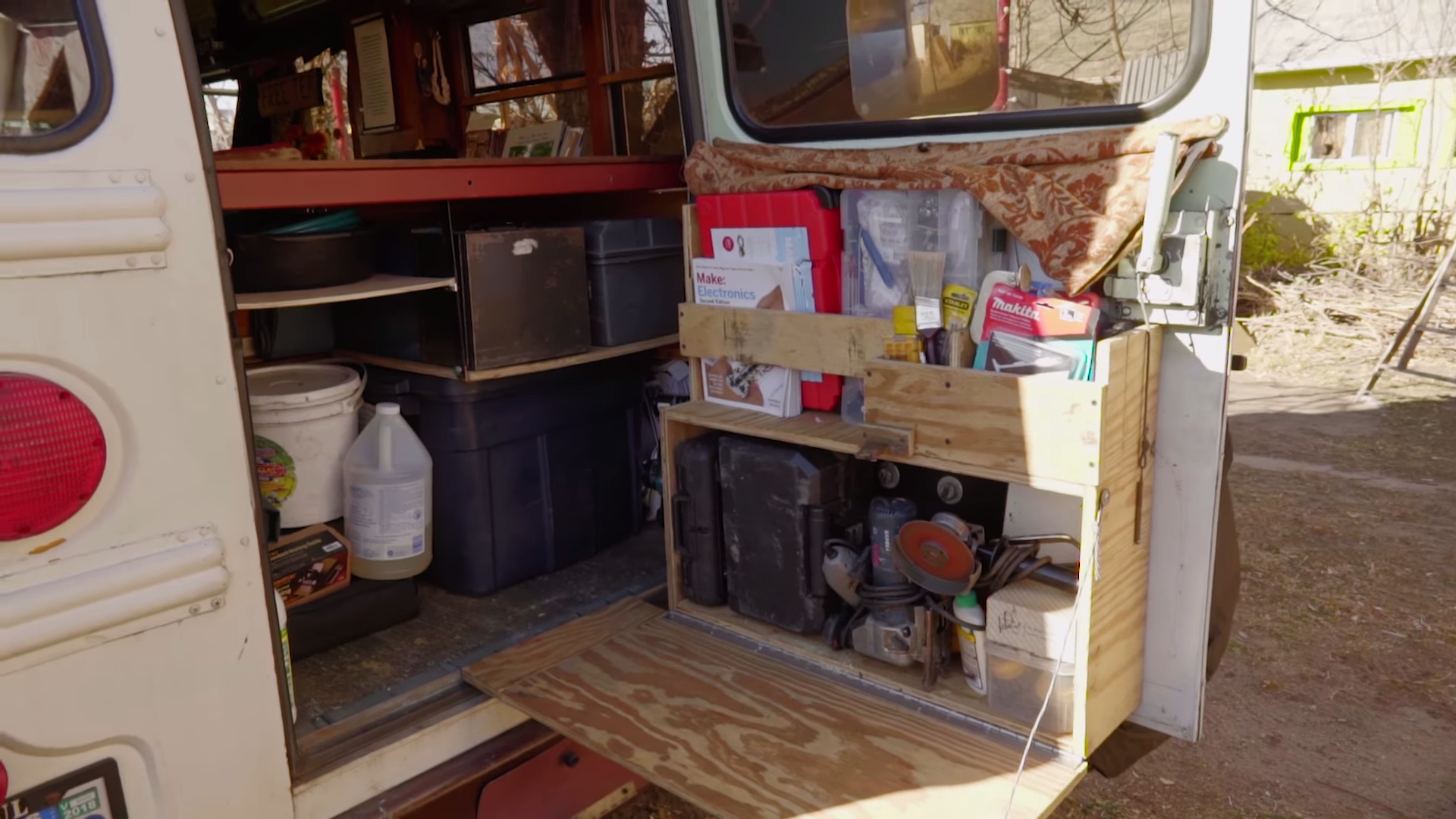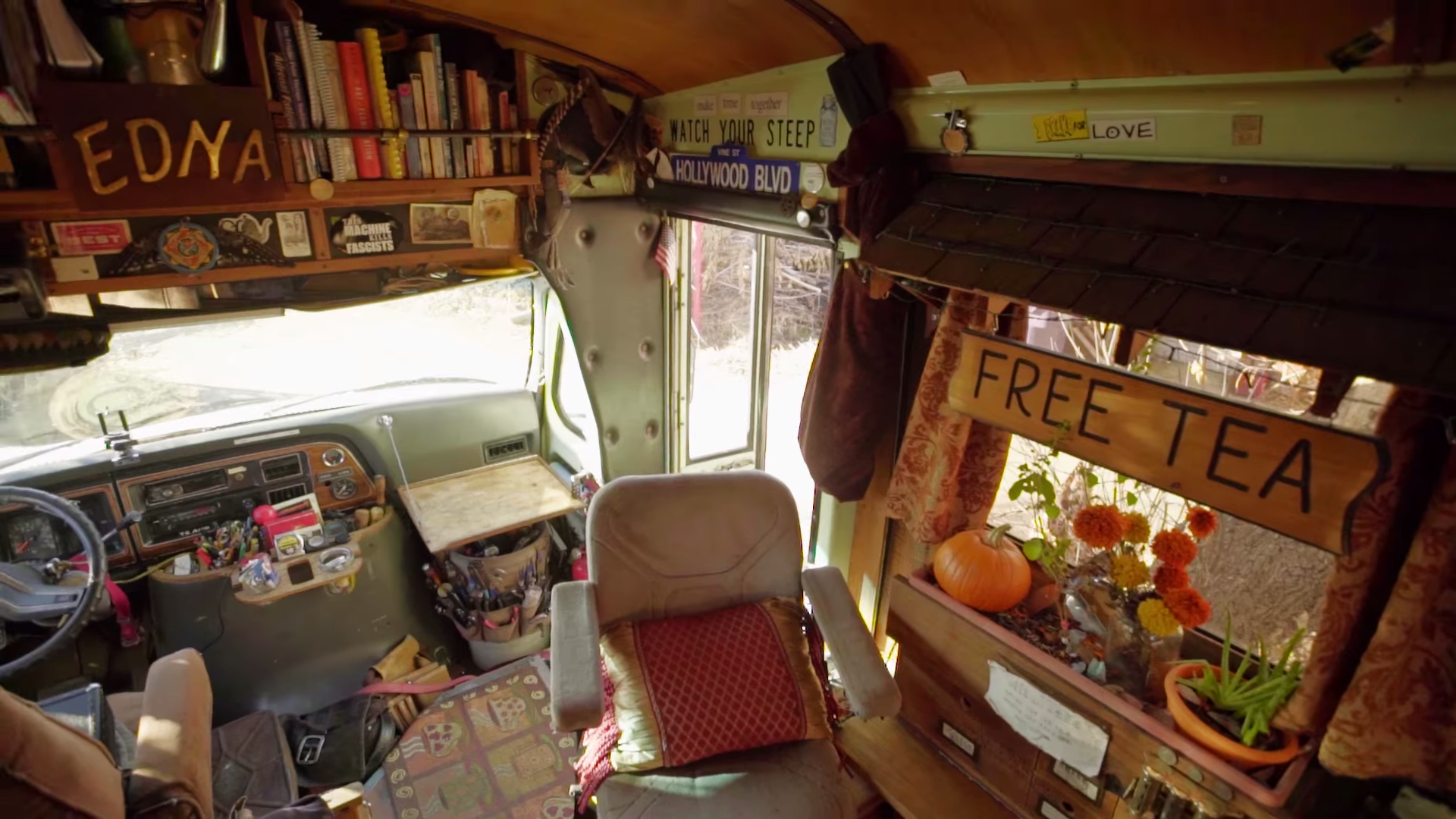MAN Converts BUS Into TINY HOME as Proof Money isn't the KEY TO HAPPINESS
Giuseppe Spadafora grew up traveling abroad with his family, his grandparents, and then he went to a traveling high school as well, so experiencing real learning was a big part of the curriculum. Traveling inside the country in middle school and outside the country to Asia, Central America in high school. About two weeks after he turned 18 he hopped his first freight train and he spent ten years off riding freight trains and hitchhiking in between, living in his truck and the beginning of living in this bus. He loved riding freight trains and hitchhiking because it gave him a ton of freedom, even if he did lose a lot of security, but living in a vehicle he felt like he still maintained a lot of that freedom but had a little more security and felt a little more grounded.
He bought this bus 10 years ago and moved into it the day he bought it. The bus is 99 percent salvaged wood 75 percent hardware including screws, plumbing, latches, fixtures. It runs on recycled vegetable oil so there's a lot of that reclaimed element to it. It wasn't like he could just go into the store and buy parts and hardware and wood, he really wanted to seek them out and find them. Most of the conversion took place in the first five years. It was a very slow process but also very intentional. So many elders and community members helped make this project happen. People helping with design elements and teaching him how to weld. He didn't have a lot of skills when he started this, this was a learning process.
Edna Lou: The Free Tea Bus is a 1989 short bus on a Ford Econoline chassis with a 7.3 liter diesel motor pre power stroke. It has a handicap door that opens up when he’s serving Tea. His solar battery setup is made up of two trojan t105 6v golf cart batteries. It's powered by a 320w solar panel on the roof. He also has the ability to charge if he wants to from his engine. It has a 30 gallon clean vegetable oil tank. He learned how to weld stainless steel just to build his tanks. On the other side he's got a 60 gallon dirty vegetable tank. He has a hidden ladder that's for accessing his roof box and cleaning his solar panel. He can also come up through the skylight on the inside.
Inside some of these like cross timbers there's telescopic poles that come out to create a shade structure. One of his favorite newer projects are these sliding screens. He really likes having screens on his windows. It's super crucial in buggy areas, but he also likes having access out the windows and not having them in the way. He has a 42 gallon freshwater tank, which has a drain on the outside that doubles as an outdoor spigot. He tenda not to use fossil fuels for very much, but he does have a propane tank under the bus and five gallons of propane will last him about three months.
He really likes tools and hardware, so he made sure to build himself a little workshop. He has his veggie oil equipment isolated from the inside of the vehicle to keep the area clean. This is his pump and funnel and some stuff like that. There is a bracket for his sink head. It has a sprayer function and it goes out the window so it can act as an outdoor shower. He has a centrifuge so he can clean vegetable oil on the road. His dirty vegetable tank is mounted underneath there. He has a vegetable oil filter to catch any last debris after centrifuging, and then he's got some controls for adjusting pressure to the centrifuge.
He has a co-pilot chair which rotates and faces forward. He has a bookshelf over the cab of the bus which is really nice to have. It's not the best idea to put a bunch of weight up high, so the whole thing is removable, and if he’s doing an event he can put his library out for display.
Each one of the gauges he has are multipurpose. Gauges are expensive but switches are cheap, so with the flip of a switch he’s able to switch between checking levels on his clean and dirty vegetable oil tanks. He has a closet that kind of drops down in the back and the shoe storage underneath all of the clothes and then below there hidden comfortably as a seat is the solar-powered fridge.
The first thing a lot of people notice when they come inside is this wood stove. This is a Navigator Stoveworks Little Cod. It heats the space plenty, and you can also make tea on it. Most people don't realize that burners on wood stoves were designed to be taken out to put your cast iron or tea kettles directly into the flame. One of the systems he’s building right now is reminiscent of a rocket stove. By running several lengths of copper pipe under the nearby cabinet, he’s able to use all of the heat produced by the smoke before it leaves the vehicle.
In the kitchen area he has running water. The hot water is heated by waste engine heat. There's a water filter. This is a ceramic water filter with a carbon core. When you're done with it you just smash it apart, throw it in nature, make sure there's only one plastic cap that's trash. He has an electric pump for the sink, but he also has a foot pump. It's much easier to conserve water with the foot pump. There's a kick pedal there which is basically just an old headlight switch from the floor of the bus, and that turns on the water pump right there so he can kick it on and off whenever he wants. He has just a regular two burner camp stove that comes out right there. Everything is salvaged so everything has a story.
The bed is held up by these supports while driving and stuff. There's also the support in the middle there slides out so basically you let out the bed and rotate the supports out of the way now the bed is just hanging on these strings. One of each string controls one side of the bed so he’s able to pull it up out of the way during the and let it down at night. He’s also able to park on a slant or angle which most streets are while keeping the bed perfectly level. It's all double backed on the pulleys so it's not super heavy just do one side at a time.
He doesn't accept monetary tips and donations while serving tea because he wants to create a completely non-monetary experience. he found that that's the best way to create the most genuine interactions. Because people always try to give him money he created the gift and take box. The idea is that anyone can put in and anyone can take out. It's not a one-for-one interaction. You don't have to put in in order to take out or vice versa. You can do both, you could do neither. It's a series of drawers, which includes the money drawer. People trip out on this because you can come to the free tea bus and you can get free tea and if you want you can get free money. The idea is to put people in the position of taking personal responsibility for themselves in relation to the whole. The really interesting part is that in 9 years of having a gift and taking with money and tens of thousands of people interacting with it, only one time was it ever emptied and that one time was someone who was in need, and so it's just kind of fun to rethink human nature.
Oftentimes change in our lives doesn't happen all at once. One of the most valuable things that he feels like he can say to someone who is seeking something different is to take steps, don't get caught up in doing everything at once. There's this idea in permaculture of transitional epochs it's like: This is where you are. This is where you want to be. And there are steps to get there. You can't just jump from point A to point B. his main goal is to create a more sharing world. The way that he does that is by sharing. Once our basic needs are met, humans are not innately self-interested. They’re actually very community oriented beings.
Watch The Full Video Here:






